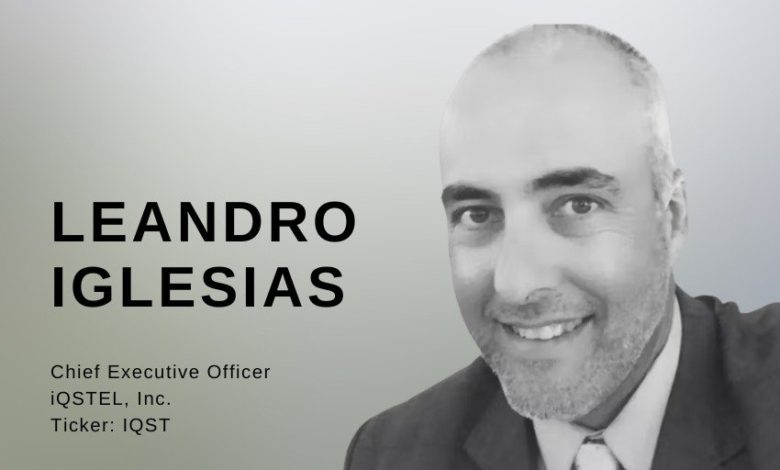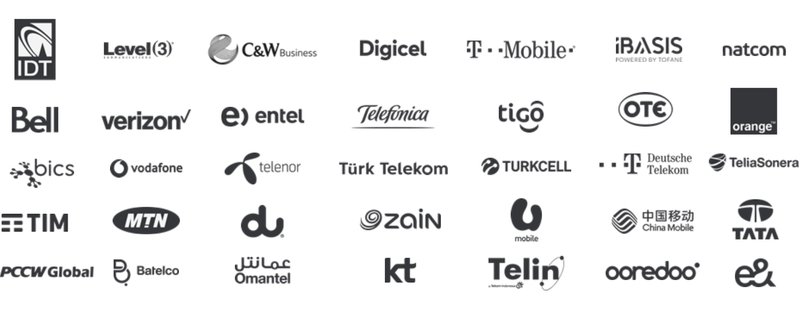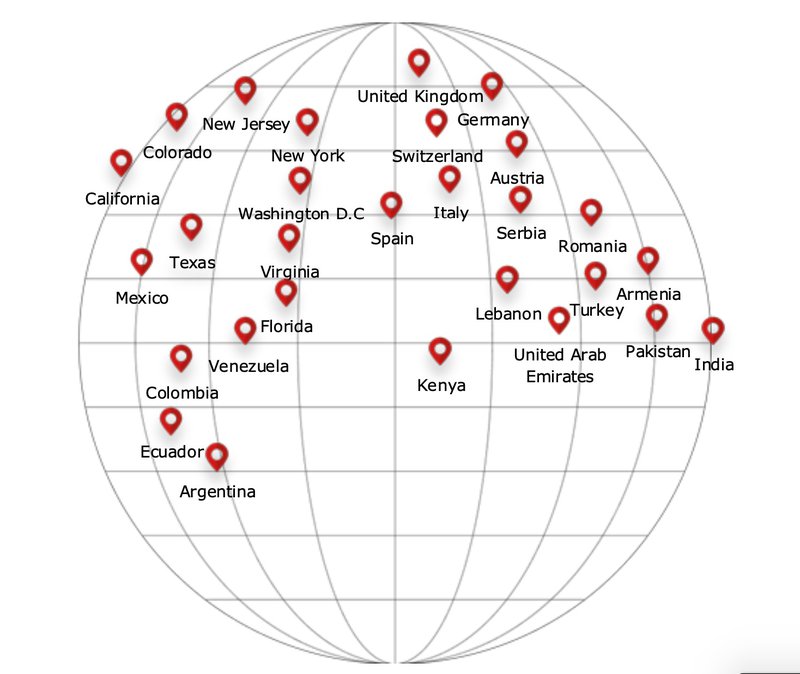
In an era defined by rapid technological shifts, companies are constantly being pushed to innovate or be left behind. Enter, IQSTEL Inc. (NASDAQ: IQST), a multinational technology powerhouse with a clear mission: to build a global tech ecosystem that delivers both exceptional shareholder value and real-world impact. We recently sat down with CEO Leandro Iglesias and his team to discuss the company's journey, its strategic roadmap, and what sets it apart in the market.

On the Company's Evolution and Business Model
Q: Thank you for sitting down with us today. Let’s get started. Could you take us through the company's background and how you started this journey?
A: We started in 2008 as a private company. In 2018, we went public on the OTC and, four months ago, got listed on Nasdaq. We started from scratch with zero revenue. In 2018, we reported $13 million in revenue, and last year, we reported almost $300 million. Our plan and our vision are to become a $1 billion revenue company by 2027. In this process, we’ve created a fantastic combination of organic growth, synergy, and smart acquisitions. We've completed 12 acquisitions so far, and each one has increased our customer base, our footprint, and our portfolio. With every single acquisition, we always measure the revenue per share as a metric to define how well the acquisitions are adding value to the shareholders. In this process, year by year and after year, we have been increasing the revenue per share of the company. That's something really important to us.
Q: What is IQSTEL's core DNA today?
A: We used to work for large telecom companies—I was at a Verizon subsidiary, and Alvaro (Alvaro Cardona, CFO) was at Telecom Italy subsidiary. But today, we're more than a telecommunication company; we are in the process of becoming a Global Connectivity, AI, and Digital Corporation. Telecommunications is important to us, but we are adding services enhanced with AI to connect with people. We have a telecom division, a fintech division, and an AI division. While about 99% of our revenue is B2B, we are moving toward becoming a B2C company.
Q: Your strategic portfolio seems to be a key differentiator. Can you explain how it all works together?
A: We have built more than a telecommunications business; we have built a strong business platform with our customers, the large telecommunications companies around the world. We have already done the most difficult part, which is gaining their trust and selling millions of dollars in telecommunication products. Our strategy is now to use that platform to sell high-margin, high-tech products. This is where the money is.
Q: How does your revenue structure currently break down between your three main divisions?
A: Currently, 80% of our revenue is from telecommunications, and the remaining 20% is from our other divisions, which are mainly fintech, but our AI services are gaining traction.
Q: How does that strategic mix help you grow?
A: We have built more than a telecommunications business; we have built a powerful business platform with our customers. We have done the most difficult part, which is gaining their trust and selling products. Our strategy now is to use that business platform to sell high-margin, high-tech products. This is where the real value is. This is good for the customers too, because for them it is too risky to start a new business relationship; they already know our commitment to excellence, thus this is a win-win situation for both.

The Strategic Roadmap to a Billion-Dollar Valuation
Q: Your growth has been impressive. What is the clear roadmap for the next few years?
A: Our intermediate goal is to achieve a $15 million EBITDA run rate next year through strategic acquisitions. For most companies, just being on Nasdaq is the ultimate destination. For us, it's not. We are focused on building a billion-dollar company.
Q: You've achieved a significant revenue run rate. What are your current financial targets, and what metrics are you prioritizing now?
A: We already achieved a $400 million annualized revenue run rate. Last month, in July, we reported $35 million in revenue. With this revenue stream, we are now more focused on EBITDA than on top-line revenue. We are going to start talking about our monthly EBITDA strategy and goals. This focus on the bottom line is key to our process of reaching a $15 million EBITDA run rate next year.
Q: Why is that billion-dollar target so important for shareholders?
A: When you look at other companies in our sector with a billion dollars in revenue, they are trading between 10 to 20 times EBITDA. That's the path we need to follow. We are currently trading at around a $30 million market cap, which is running a business for $300 million. Our idea is to get to a $15 million EBITDA rate next year. At a 10x multiple, our market cap should be $150 million. If the market recognizes our enhanced technology, we could be traded at $300 million, or 20x EBITDA. That is our simple strategy.
Q: How do you ensure your aggressive M&A strategy doesn't dilute shareholder value?
A: We have been creating value for our shareholders with every acquisition. We measure the revenue per share as a metric to define how well an acquisition is adding value. We have not diluted our shareholder base because we have been increasing the net shareholders' equity. In just four months, 4% of our market cap is held by institutional holders. They went to the public market and bought positions. That's fantastic. We are pretty sure that by showing results on this growth path, we will continue to gain shareholder value.
A Compelling Investment Opportunity
Q: Given your low market cap and high revenue run rate, what should retail investors take away from this?
A: Our business is strategically positioned in some of the world's largest and fastest-growing sectors. The telecom market is estimated at $1.74 trillion. The fintech market is estimated at $340 billion with a CAGR of 16-20%. And the AI market is estimated at $200 billion. We are not operating in small markets; we are building a platform to capture a dominant share of these industries.
Q: You mentioned your AI services are gaining traction. Can you give us an example of how they work and the value they provide?
A: We've developed an AI agent for call center services called iq2call.ai. The idea is to put an AI agent in front of a call, which picks up instantaneously. Instead of navigating a complex automated menu or waiting on hold, customers can start talking immediately. Most interactions can be managed by the AI, and if a query is outside its scope, the call is passed to a human agent. This improves the brand perception of a company and, at the same time, reduces its operational costs.
Q: How does the Cycurion partnership add value and fit into this strategy?
A: Our strategic partnership with Cycurion enhances our ability to deliver innovative cybersecurity solutions to our global customer base. Under a Memorandum of Understanding, we are collaborating to sell a new cybersecurity product through our platform and to develop AI-enhanced cybersecurity services with Cycurion’s AI department. These services aim to leverage AI for advanced threat detection and response, starting with security operations center applications. To align our interests, we have agreed to exchange $1 million in shares, fostering a close strategic partnership. Subject to board approval and compliance with applicable securities laws, we intend to distribute approximately 50% of the Cycurion shares received as a dividend to our shareholders, with the record date to be announced in accordance with regulatory requirements. This initiative is designed to increase shareholder value while positioning us to capitalize on the growing cybersecurity market. These plans are forward-looking and subject to risks and uncertainties, as detailed in our SEC filings.
Q: That's a great example of vertical integration. It seems you have this huge telecom base, and you're strategically acquiring services that you can integrate to add value. Is that correct?
A: That's a perfect way to put it. The hardest part is getting the customers. We've already built more than 600 network interconnections around the world with companies like Vodafone, Verizon, T-Mobile, and AT&T. We have a trusted relationship with them. It's for them that we are now offering new services with the quality and trust we've built over the years. They are already buying these services anyway, and we can offer them best-in-class solutions that integrate seamlessly.

Final Thoughts: A Technology Powerhouse on the Rise
IQSTEL Inc. (NASDAQ: IQST) isn't just another company; it's a strategically built powerhouse positioned for exponential growth and a significant re-rating in the market. With a proven track record of converting ambitious plans into tangible results, from reaching a $400 million annual revenue run rate ahead of schedule to a successful Nasdaq uplisting, the company has demonstrated its ability to execute.
The clear path to a $1 billion revenue goal by 2027 is backed by a disciplined strategy focused on high-margin acquisitions and a relentless drive for profitability. For investors, the opportunity is clear and compelling. The striking valuation gap, growing institutional support, and a significant analyst price target all point to a company that is currently undervalued. We believe this is a company that deserves to be on every investor's radar.




